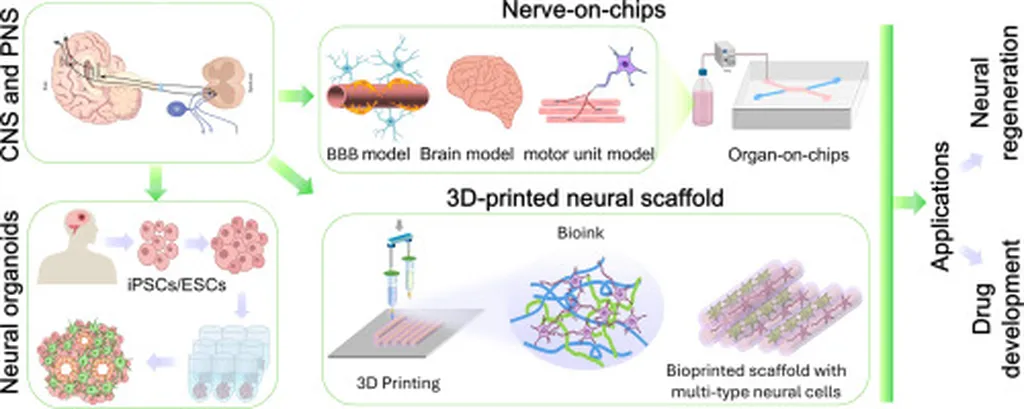In the intricate dance of bodily functions, the nervous system plays a pivotal role, and nowhere is this more evident than in the maintenance of bone health. A groundbreaking review published in *BMEMat* (Biomedical Engineering and Materials), led by Yefeng Wu from the Faculty of Dentistry at the University of Hong Kong, sheds light on the skeletal interoceptive circuitry, a complex network that orchestrates the balance of bone tissue. This research could revolutionize our understanding of bone homeostasis and pave the way for innovative therapeutic strategies, with significant implications for the construction and energy sectors.
Bone tissue, often perceived as a static structure, is in fact a dynamic entity, constantly remodeling in response to various signals. The nervous system, through skeletal interoception, plays a crucial role in this process. “The skeletal interoceptive circuits represent a sophisticated mechanism involving the skeletal, nervous, immune, and endocrine systems,” explains Wu. This intricate interplay ensures that bone tissue remains in a state of equilibrium, a process known as bone homeostasis.
The review outlines three primary components of the skeletal interoceptive circuitry: the ascending pathways that perceive and convey signals to the central nervous system, the central neural pathways that process and interpret these signals, and the descending pathways that mediate the regulatory effects on bone tissue. Understanding these pathways is crucial for developing targeted therapies that can modulate bone homeostasis.
The implications of this research extend beyond the medical field. In the construction industry, where bone-like materials are often used, a deeper understanding of bone homeostasis could lead to the development of more durable and adaptable materials. Moreover, the energy sector could benefit from insights into the efficient use of resources, as bone tissue is a model of sustainable remodeling.
Wu’s research is a testament to the interconnectedness of various bodily systems and the potential of interdisciplinary approaches in unraveling complex biological processes. As we delve deeper into the mysteries of the skeletal interoceptive circuitry, we may unlock new avenues for treating bone-related diseases and developing innovative materials, ultimately shaping the future of healthcare and industry alike.

